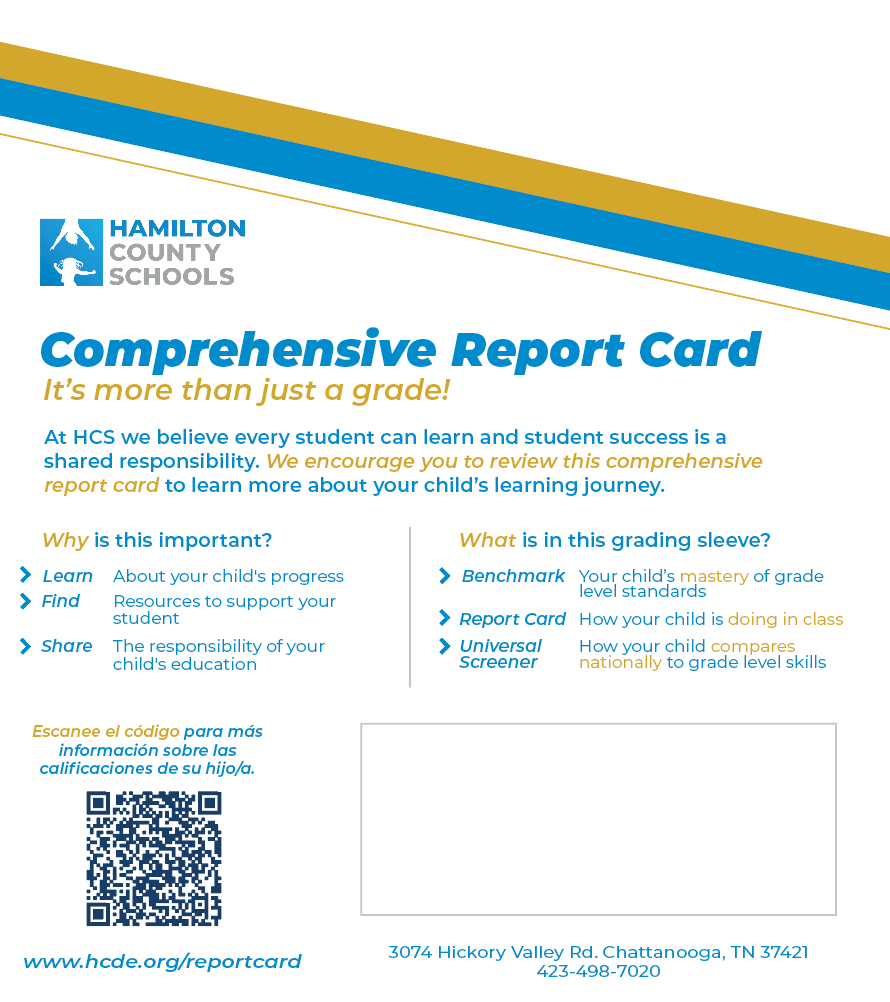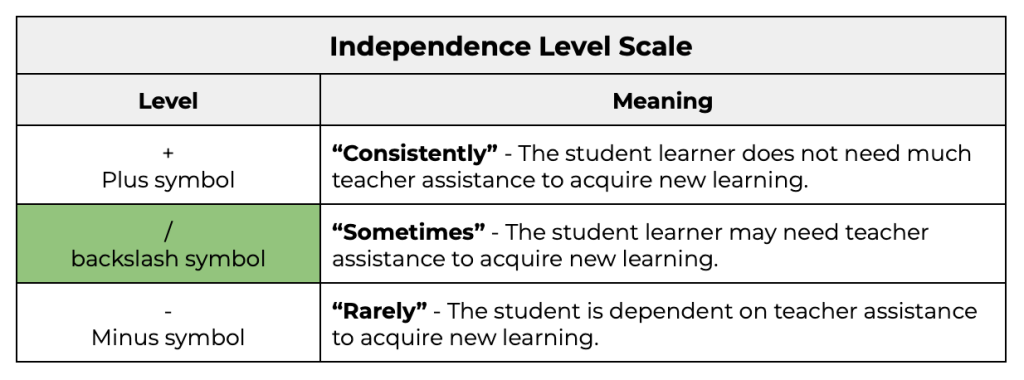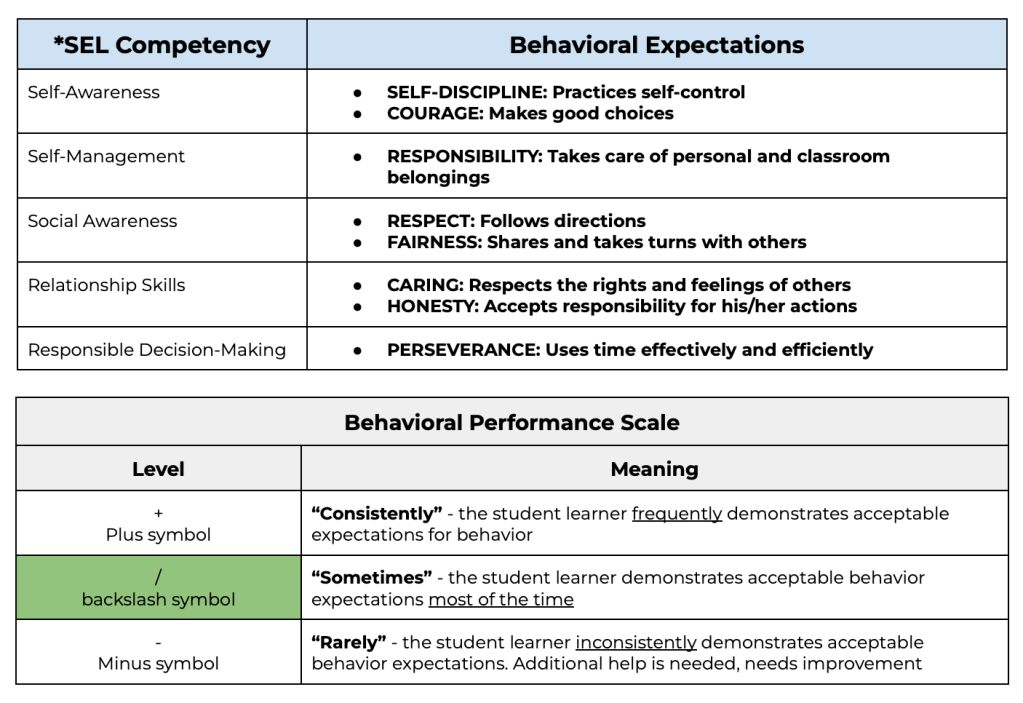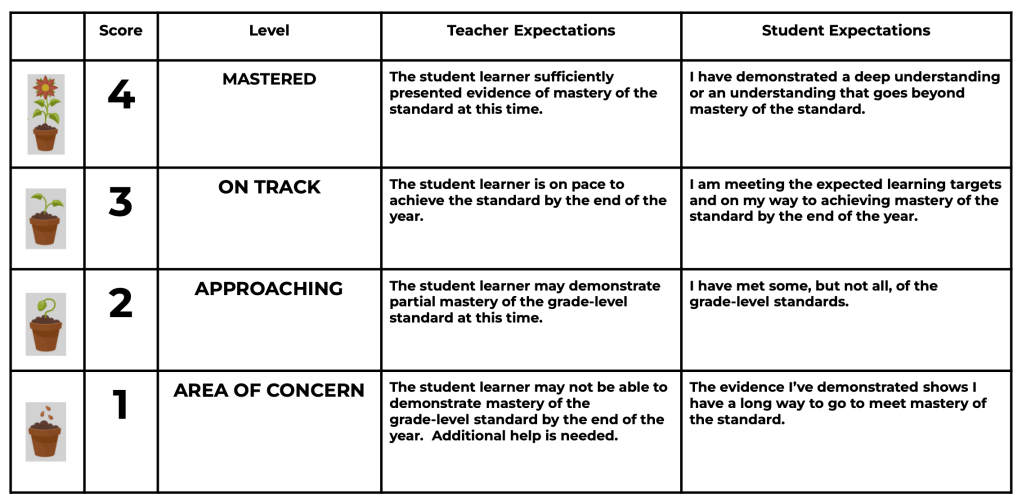Getting to Know Your Child's Report Card
My Student’s Comprehensive Report Card
Hamilton County Schools is committed to ensuring a fair, equitable and comprehensive approach to communicating student progress that is aligned to our district’s mission, Opportunity 2030. With that being said, you will see a few updates to our approach to report card grades during the 2023-2024 school year including sending more information home to you describing your child’s overall academic and social progress in school.
At HCS, we believe every student can learn and that student success is a shared responsibility. We encourage you to review this comprehensive report card to learn more about your child’s learning journey.

Why is the report card important?
- Learn about your child’s progress
- Share the responsibility of your child’s education
- Find resources to support your student
What should I expect to see in my child’s report card sleeve?
- Report Card – Describes how your child is doing in class
- Benchmark Report – Explains your child’s mastery of grade level standards
- Universal Screener – Shows how your child compares nationally to grade level skills in ELA and MATH
Watch the following video for a report card update for parents.
Explaining Grading Scales
Mastery Scale Descriptors for K-2 Report Cards
A score of 4 means:
The student learner has fully and completely “mastered” the standard. The student can be relied upon to apply and use the standard for more advanced pursuits. The 4 score may also represent that the student has achieved some measure of understanding, beyond and above the expectation of the grade-level standard.
A score of 3 means:
The student learner is right “on track” for achieving the standard (by the end of the year or before). Students earning a score of 3 represent that they are on track as a learner for the appropriate grade-level.
A score of 2 means:
The student learner is “approaching” mastery. The student may not consistently demonstrate growth towards the standard in a specific grading quarter. While they may make gains, it may be fluctuating as they may lose some achieved gains or vary in the capability to grasp new content at the expected pace.
A score of 1 means:
The student learner is having difficulty achieving mastery of standards (area of concern). Student work indicates a partial understanding and limited display of skills and concepts included in the Tennessee Academic Standards. Specific classroom supports are put in place to support the learner with the ability to demonstrate progress towards mastery.
Grading Scale for Grades 3-5 Report Cards
Beginning the 2022-23 school year, the state of Tennessee requires a ten-point scale be used in grades 9-12:
| A | 90-100* |
| B | 80-89 |
| C | 70-79 |
| D | 60-69 |
| F | 59 or below |
Explanation of the Independence Level Ratings
Academic Press: Marking a Student’s Independence Level on the Report Card
The Independence Level on the report card is intended to offer teachers another way to describe the level of performance they see in their learners. This score is based on the teacher’s observations of the child’s academic effort in the classroom, as well as the teacher’s experience with the student learner. The independence level represents the degree of assistance or reliance on support the student may need to fully master the standard at that time.

Explanation of Student Behavior Scale
Personalization: Reporting on Student Behavior Competencies
Academic reporting should be based solely on academic performance – in other words, a student’s scores in science should be based solely on the science content they have mastered. However, non-academic performance – such as completing work on time, collaborating with peers, and demonstrating good citizenship in the classroom – has a significant bearing on student life both in school and beyond in college, career, and civic life, and is essential for success. As such, social emotional competencies should be explicitly taught to help students take action to improve and excel in both academic performance and personal habits. Furthermore, when academic and non-academic performance are reported separately, students and parents have a more clear understanding of next steps to develop and improve.
Here are the competencies that are reinforced district wide and how they are rated on the report card:

When to expect it?
Progress Reports are mid-point check ins of a student’s progress each quarter of the school year (4-5 weeks). You should expect to receive a report card and grading sleeve home from your child every quarter (9 weeks).
Quarter 1 Progress Reports – September 10, 2025
Quarter 1 Report Cards – October 24, 2025
Quarter 2 Progress Reports – November 19, 2025
Quarter 2 Report Cards – January 16, 2026
Quarter 3 Progress Reports –February 7, 2026
Quarter 3 Report Cards – March 27, 2025
Quarter 4 Progress Reports – April 22, 2026
Quarter 4 Report Cards – May 22, 2026

